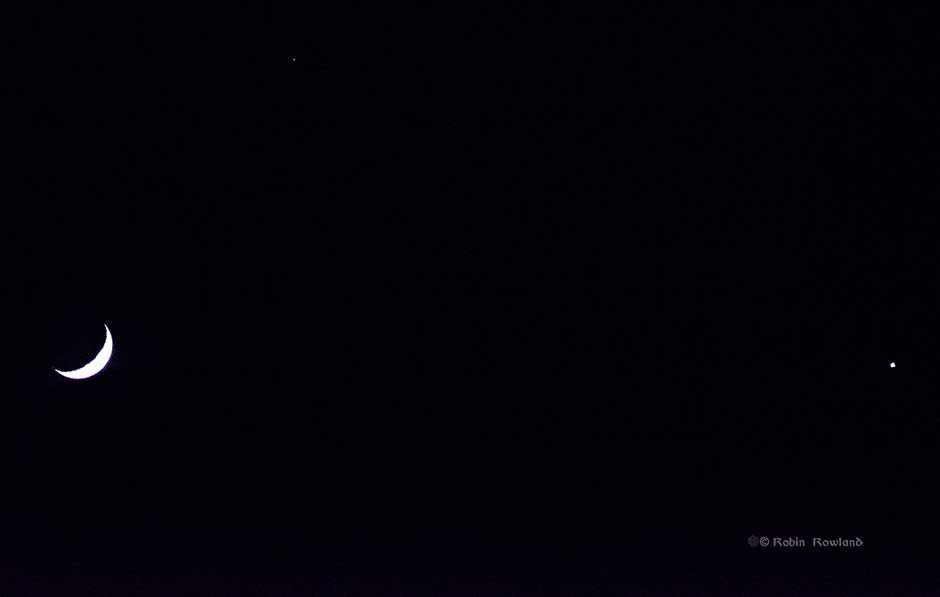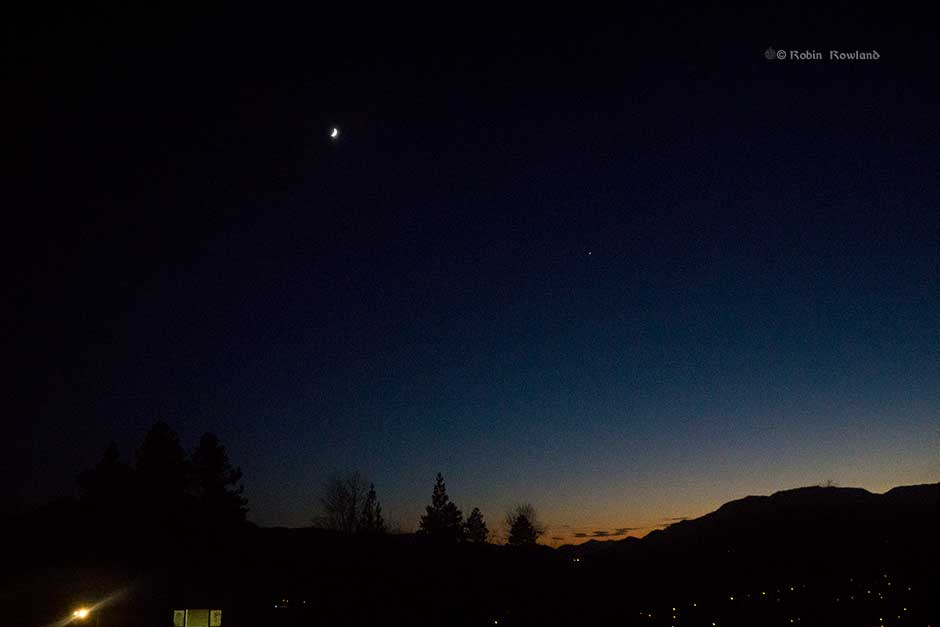This week is a stargazer’s delight. Mars is at its closest approach to Earth, and that means the Red Planet is the brightest it will be from July 27 to July 31 (the latter date is when Mars is actually the closest). Although North America missed the solar eclipse earlier this week, the moon is […]
Tag: Mars
The moon, Mars, Venus triangle
January 31, 2017
The moon (waxing crescent 12.1%) with Mars (near top of the photo, one third of the way to Venus) and Venus in a triangle. (Robin Rowland) Sony Alpha 7II Sony 70 to 300G lens, ISO 8000, 1/400m, f5.6
Icy nights, Venus, Mars and the moon
January 13, 2017
Mars (top center) and Venus set over the mountains of Kitimat #BC with the snow illuminated by the light of 93 per cent gibbous moon. Taken on a cold clear -23C windchill night ISO 8000 1/60 f4.5, January 11, 2017 (Robin Rowland) The first two weeks of January in Kitimat were cold and clear as […]


